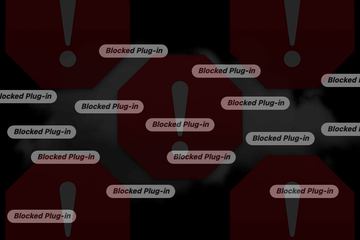This article explains the rationale behind a blocked plug-in on Mac and provides a workaround for the error, including a way to remove the misbehaving app.
Update:
Plug-ins are intended to make sure a system component, such as a web browser, supports certain features or types of content provided by websites and other modern electronic services. This is an important prerequisite for delivering a proper user experience, but with the caveat that these enhancements largely have a third-party nature and may become a source of security issues. An error on Mac saying “Blocked Plug-in” typically means that the system has prevented a specific plug-in from running. Most reports regarding this issue are associated with Adobe software, including Flash Player and Acrobat Reader. For instance, the alert may occur when a user tries to open an email link in Safari leading to a PDF document. The file preview turns out to be a no-go in this case as the browser displays a black screen with the above-mentioned message in the center. Incidentally, this can be a cross-browser issue and hold true for Chrome and Firefox as well.
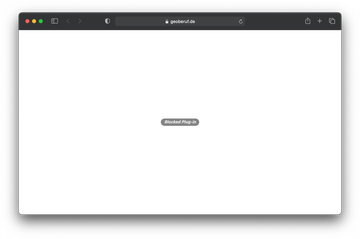
One more scenario that falls under the same category is when a Mac user goes to a website that relies on Adobe Flash Player to interact with the visitors. A common situation involves watching multimedia or playing an in-page game. The “Blocked Plug-in” error may show up alongside a notification saying that the content requires the latest version of the Flash Player. Why would Apple pull the plug on a plug-in (pardon the linguistic redundancy)? In the case of Flash, things are fairly clear. This software has gained notoriety for being crammed up with vulnerabilities. Although Adobe is releasing patches off and on, computers running it may stay susceptible to cybercriminals’ attacks for months. Arbitrary code execution and data theft are among the biggest issues stemming from these imperfections. Moreover, the vendor is rumored to plan on ending support of Flash Player in 2020 and it will be eventually disabled from major web browsers by default. As a matter of fact, Apple has already done it since Safari 10, but users can still turn on the plug-in if they need it.
“Blocked Plug-in” error virus may re-infect your Mac multiple times unless you delete all of its fragments, including hidden ones. Therefore, it is recommended to download Combo Cleaner and scan your system for these stubborn files. This way, you may reduce the cleanup time from hours to minutes.
Download Now Learn how Combo Cleaner works. If the utility spots malicious code, you will need to buy a license to get rid of it.In addition to the obvious legit causes for macOS to block a plug-in, there is a shadier course of action that involves the error messages in question. Malware distributors might try to ambush a user by misreporting a bug of that kind. To execute this hoax, perpetrators use a potentially unwanted application (PUA) that hijacks the victim’s web browser and either forwards the traffic to sketchy sites or triggers misleading popup warnings. This type of a malvertising campaign is accompanied by “Missing Plug-in” or “Blocked Plug-in” alerts. Unlike valid system notifications, these ones will typically include a button to download the latest build of the “enhancement” tool. However, instead of installing the software, this routine results in depositing a malicious app such as adware that will embed sponsored links and display ads across the visited web pages. Scareware is another common form of harmful code doing the rounds this way.
If “Blocked Plug-in” errors are actually shown by macOS for security reasons or to maintain system stability, there are several things that should sort it out. Before moving on to the troubleshooting, it’s worth pointing out that the benign instance of disabling of a random plug-in usually occurs right after an upgrade to a new system version that introduces a change in handling third-party applications. Let’s now zoom back into the repair. Here are a few techniques every effected Mac user should try first:
- Update the plug-in. First things first, the applet may have been blocked because it’s way out of date. If so, the starting point of the fix is to determine which plug-in cannot be launched. If the error pops up when you are trying to preview a PDF file received over email, then go to get.adobe.com and download the newest iteration of Acrobat Reader. If it’s a Flash Player issue, then install the most recent release of the program from the above site.
- Make sure Safari is up to date. Note that the “Blocked Plug-in” alert is mostly a Safari issue. If you are using macOS Big Sur, then you already have the latest version of the browser and you can skip this step. For earlier versions of the operating system, click the App Store icon in the Dock, go to the Updates tab, and check if there is a newer version of Safari or whatever browser is acting up. Apply the update if available.
- Re-enable the plug-in manually. Expand the Safari menu and select Preferences. Click the Websites tab (on older macOS versions, go to Security tab). The bottom part of the left-hand navigation bar reflects the list of installed plug-ins and their current status. Find the right entry and check the box next to it to enable the plug-in. You can configure the app to only run on specific sites, too.
If the above steps don’t rid you of the “Blocked Plug-in” error, chances are that it’s caused by malicious activity on your Mac. To address the predicament, you need to check the computer for unwanted code and remove it for good. The sections below will walk you through this process.
Blocked plug-in error virus manual removal for Mac
The steps listed below will walk you through the removal of this malicious application. Be sure to follow the instructions in the specified order.
Expand the Go menu in your Mac’s Finder bar and select Utilities as shown below.
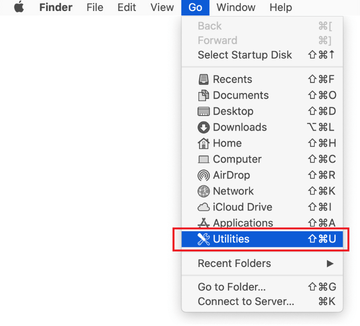
Locate the Activity Monitor icon on the Utilities screen and double-click on it.
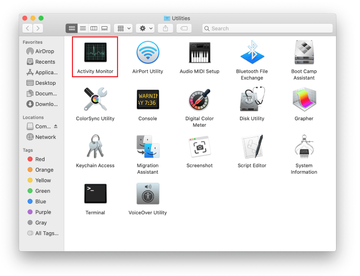
In the Activity Monitor app, look for a process that appears suspicious. To narrow down your search, focus on unfamiliar resource-intensive entries on the list. Keep in mind that its name isn’t necessarily related to the way the threat is manifesting itself, so you’ll need to trust your own judgement. If you pinpoint the culprit, select it and click on the Stop icon in the upper left-hand corner of the screen.
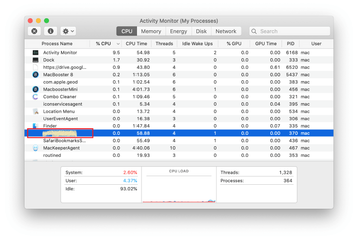
When a follow-up dialog pops up asking if you are sure you want to quit the troublemaking process, select the Force Quit option.
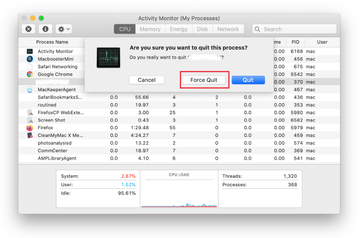
Click on the Go menu icon in the Finder again and select Go to Folder. You can as well use the Command-Shift-G keyboard shortcut.

Type /Library/LaunchAgents in the folder search dialog and click on the Go button.
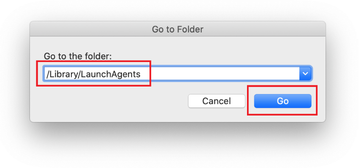
Examine the contents of the LaunchAgents folder for dubious-looking items. Be advised that the names of files spawned by malware may give no clear clues that they are malicious, so you should look for recently added entities that appear to deviate from the norm.
As an illustration, here are several examples of LaunchAgents related to mainstream Mac infections: com.pcv.hlpramc.plist, com.updater.mcy.plist, com.avickUpd.plist, and com.msp.agent.plist. If you spot files that don’t belong on the list, go ahead and drag them to the Trash.
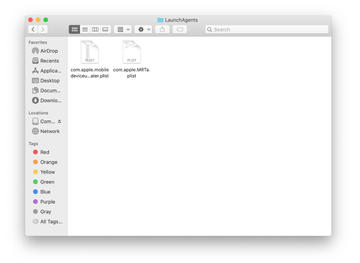
Use the Go to Folder lookup feature again to navigate to the folder named ~/Library/Application Support (note the tilde symbol prepended to the path).
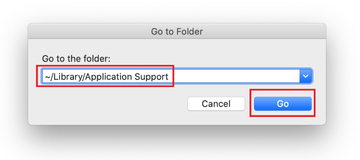
When the Application Support directory is opened, identify recently generated suspicious folders in it and send them to the Trash. A quick tip is to look for items whose names have nothing to do with Apple products or apps you knowingly installed. A few examples of known-malicious folder names are UtilityParze, ProgressSite, and IdeaShared.
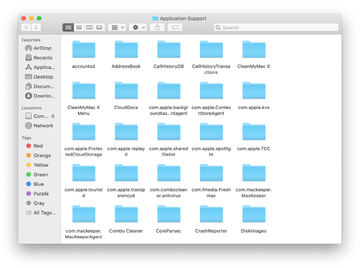
Enter ~/Library/LaunchAgents string (don’t forget to include the tilde character) in the Go to Folder search area.
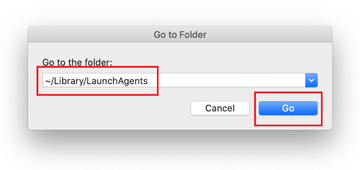
Look for dodgy items related to the blocked plug-in error virus (see logic highlighted in subsections above) and drag the suspects to the Trash.
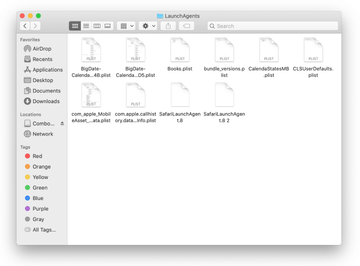
Type /Library/LaunchDaemons in the Go to Folder search field.
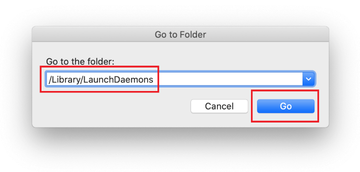
In the LaunchDaemons path, try to pinpoint the files the malware is using for persistence. Several examples of such items cropped by Mac infections are com.pplauncher.plist, com.startup.plist, and com.ExpertModuleSearchDaemon.plist. Delete the sketchy files immediately.
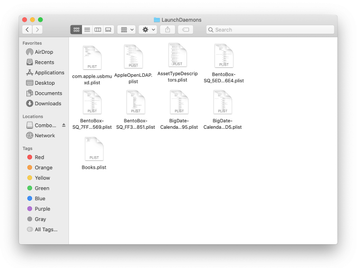
Click on the Go menu icon in your Mac’s Finder and select Applications on the list.

Find the entry for an app that clearly doesn’t belong there and move it to the Trash. If this action requires your admin password for confirmation, go ahead and enter it.
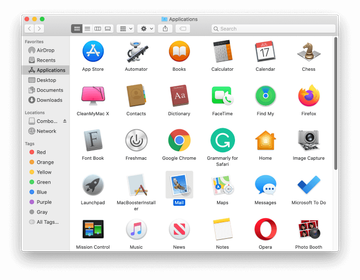
Expand the Apple menu and select System Preferences.
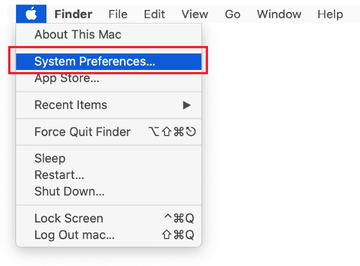
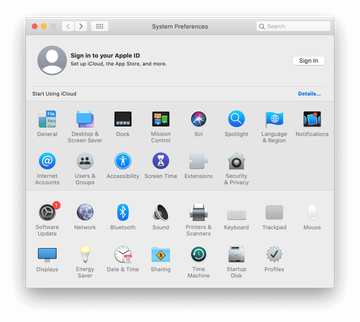
Proceed to Users & Groups and click on the Login Items tab.
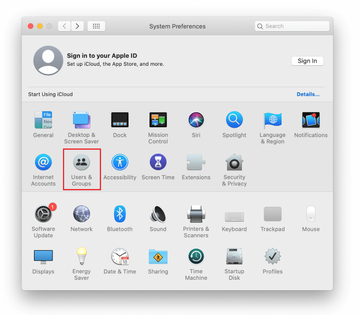
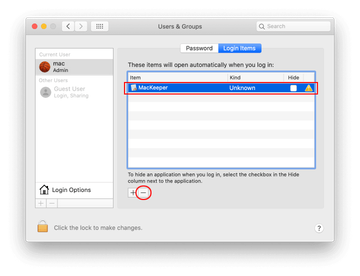
Now select Profiles under System Preferences. Look for a malicious item in the left-hand sidebar. Several examples of configuration profiles created by Mac adware include TechSignalSearch, MainSearchPlatform, AdminPrefs, and Chrome Settings. Select the offending entity and click on the minus sign at the bottom to eliminate it.
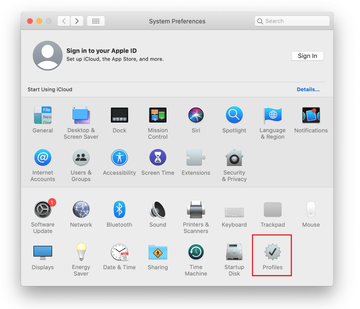

Get rid of “Blocked Plug-in” alert in web browser on Mac
To begin with, the web browser settings taken over by the blocked plug-in error virus should be restored to their default values. Although this will clear most of your customizations, web surfing history, and all temporary data stored by websites, the malicious interference should be terminated likewise. The overview of the steps for completing this procedure is as follows:
- Remove blocked plug-in error in Safari
- Open the browser and go to Safari menu. Select Preferences in the drop-down list.
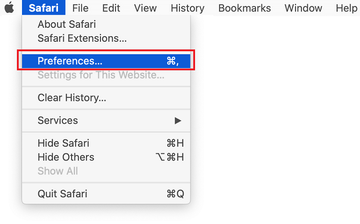
- Once the Preferences screen appears, click on the Advanced tab and enable the option saying “Show Develop menu in menu bar”.
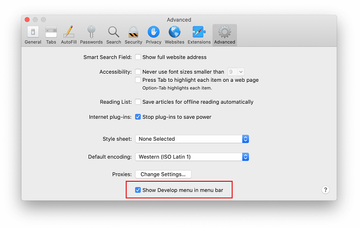
- Now that the Develop entry has been added to the Safari menu, expand it and click on Empty Caches.
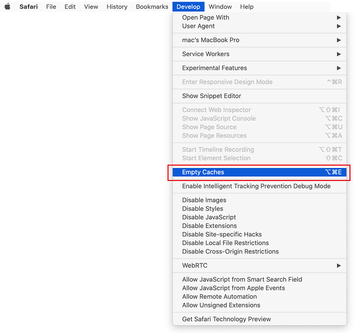
- Now select History in the Safari menu and click on Clear History in the drop-down list.
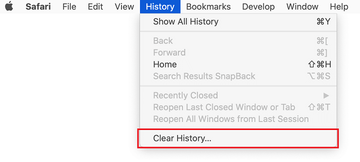
- Safari will display a dialog asking you to specify the period of time this action will apply to. Select all history to ensure a maximum effect. Click on the Clear History button to confirm and exit.

- Go back to the Safari Preferences and hit the Privacy tab at the top. Find the option that says Manage Website Data and click on it.

- The browser will display a follow-up screen listing the websites that have stored data about your Internet activities. This dialog additionally includes a brief description of what the removal does: you may be logged out of some services and encounter other changes of website behavior after the procedure. If you’re okay with that, go ahead and click on the Remove All button.
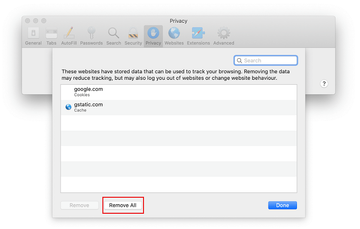
- Restart Safari
- Open the browser and go to Safari menu. Select Preferences in the drop-down list.
- Remove blocked plug-in error virus in Google Chrome
- Open Chrome, click the Customize and control Google Chrome (⁝) icon in the top right-hand part of the window, and select Settings in the drop-down
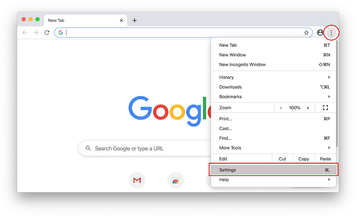
- When on the Settings pane, select Advanced
- Scroll down to the Reset settings section.
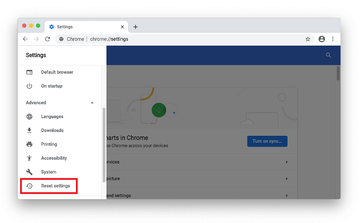
- Confirm the Chrome reset on a dialog that will pop up. When the procedure is completed, relaunch the browser and check it for malware activity.
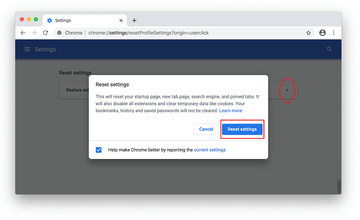
- Open Chrome, click the Customize and control Google Chrome (⁝) icon in the top right-hand part of the window, and select Settings in the drop-down
- Remove blocked plug-in alert from Mozilla Firefox
- Open Firefox and go to Help – Troubleshooting Information (or type about:support in the URL bar and press Enter).
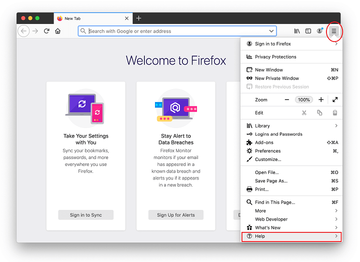

- When on the Troubleshooting Information screen, click on the Refresh Firefox button.
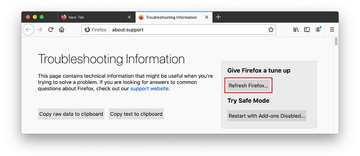
- Confirm the intended changes and restart Firefox.
- Open Firefox and go to Help – Troubleshooting Information (or type about:support in the URL bar and press Enter).
Get rid of “Blocked Plug-in” error using Combo Cleaner removal tool
The Mac maintenance and security app called Combo Cleaner is a one-stop tool to detect and remove “Blocked Plug-in” error virus. This technique has substantial benefits over manual cleanup, because the utility gets hourly virus definition updates and can accurately spot even the newest Mac infections.
Furthermore, the automatic solution will find the core files of the malware deep down the system structure, which might otherwise be a challenge to locate. Here’s a walkthrough to sort out the “Blocked Plug-in” error issue using Combo Cleaner:
Download Combo Cleaner installer. When done, double-click the combocleaner.dmg file and follow the prompts to install the tool onto your Mac.
By downloading any applications recommended on this website you agree to our Terms and Conditions and Privacy Policy. The free scanner checks whether your Mac is infected. To get rid of malware, you need to purchase the Premium version of Combo Cleaner.
Open the app from your Launchpad and let it run an update of the malware signature database to make sure it can identify the latest threats.
Click the Start Combo Scan button to check your Mac for malicious activity as well as performance issues.
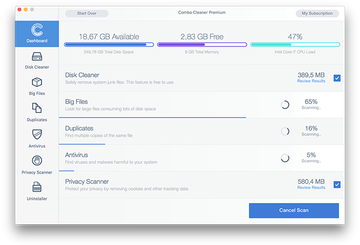
Examine the scan results. If the report says “No Threats”, then you are on the right track with the manual cleaning and can safely proceed to tidy up the web browser that may continue to act up due to the after-effects of the malware attack (see instructions above).
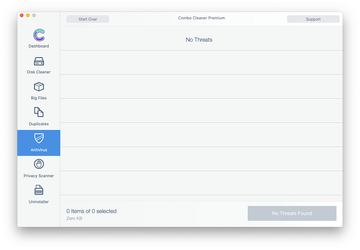
In case Combo Cleaner has detected malicious code, click the Remove Selected Items button and have the utility remove “Blocked Plug-in” error threat along with any other viruses, PUPs (potentially unwanted programs), or junk files that don’t belong on your Mac.
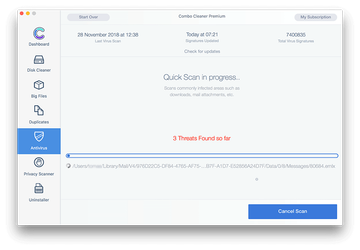
Once you have made doubly sure that the malicious app is uninstalled, the browser-level troubleshooting might still be on your to-do list. If your preferred browser is affected, resort to the previous section of this tutorial to revert to hassle-free web surfing.
FAQ
What is block plugin?
A plugin can be blocked on your Mac for two reasons. First, it may not run if it’s out of date and lacks functionality to fully support your current software. The other scenario kicks in when Apple prevents a specific plugin from being executed due to compatibility issues or security concerns. The latter situation is far more common, given the Mac maker’s hardening control over the ecosystem of third-party code. If a plugin – which is technically a piece of software – fails to pass macOS notarization checks, you won’t be able to launch it and view web content that uses this potentially harmful entity.
How do I unblock a plug-in on my Mac?
Apple has been changing things a bit in this regard. All of your previously installed Safari plugins used to be listed under the “Security” tab of the browser’s Preferences screen. If you are using the latest Safari version, though, the bulk of this logic has migrated into the “Websites” tab. It allows you to specify permissions for websites to use specific plug-ins and features. In most cases, the original configuration of the item called “Reader” gives Mac users a hard time and causes the “Blocked Plug-in” alert. To get around this obstacle, click this entry in the sidebar and select “On” next to the relevant site.
There are also extensions listed under the eponymous Safari Preferences tab that displays your add-ons along with their current statuses. If you discover that an extension you need has been disabled, you can unblock it by putting a checkmark next to its name. Before doing it, make sure this item is legitimate and won’t harm your system. It is recommended to stick with extensions available on the official App Store. They are extensively checked for dubious activity and updated automatically.
How do I stop blocked plugins on Mac?
If a plugin is blocked on Mac, there is no need to stop it additionally. It won’t run anyway. In case you need the plugin to work again, open Safari, head to Preferences, click the “Websites” tab, select the blocked plugin in the sidebar, and change the setting for a particular website from “Off” to “On”. This will allow the content to be displayed on that resource. If you are sure that it’s safe to allow the plugin on all websites, simply select “On” next to the option at the bottom that says, “When visiting other websites”.
